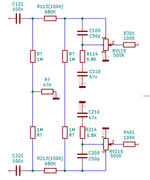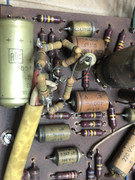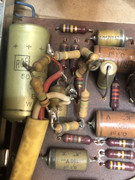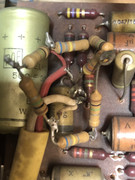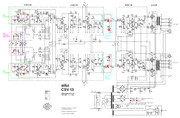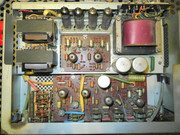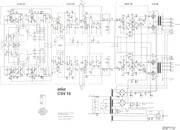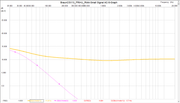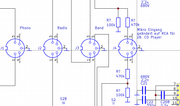Hello,
I will be writing in English, because it will be easier for you to translate to German than to understand my German.

I have had a CSV13 as my daily driver for about eight years now, and have completely rebuilt my amp. There are at least two approaches to restoring a vintage amp like this.
- Restoring it as a museum piece - no changes to the circuit, sourcing period-correct replacement parts, etc.
- Restoring it as a modern hifi amplifier - replacing passive components for better quality modern parts, fixing the circuit, adjusting the circuit to comply with modern HiFi specification, etc.
There are great articles about working on the CSV13 written by Frihu and Thomas Van Den Boom. I have read them and learned a lot.
That schematic you have attached is actually my image I posted on forums years ago, with some of my initial changes. Please disregard it.
So, first things first, that modification you have on your amplifier does two things.
First, it is a voltage divider, so it reduces the output of the preamplifier to the power amplifier. This was done so that a CD or any modern line source would not overdrive the power amp.
Second, and this is purely speculative, these two 1M resistors connecting the channels may have been used to even out the output level of both channels. CSV13 has an inherent channel imbalance due to a design fault.
My recommendation would be to get rid of these modifications and return the circuit to its original state before you proceed any further. You can fix both issues in a much better way.
If you want to get the most out of your amp, there are several things you should consider changing.
1. Change the line input tube from 1b/2b to 3a/3b and change the phono preamp topology to use two triodes permanently.
This is pretty straightforward modification, but requires some analysis of the wiring on the source selector and on the circuit board.
As a result, you will get much lower input sensitivity for the line inputs, and consistent phase on all inputs. You can get rid of the voltage dividers on the inputs and replace the resistors on the source selector with wire.
Additionally, it is a good idea to change CCIR filter to RIAA.
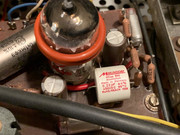
2. Replace all coupling capacitors with higher values i.e. 0,047uF with 0.1uF, and 0.1uF with 0.22uF
This will improve the frequency response slightly. Also, if you have the Paper in Oil coupling capacitors in your amp, you must replace them, because they will be all shot.
3. Rewire the feedback loop in the power amp stage to remove channel imbalance and improve channel separation.
The channel imbalance results from pretty bad and uneven crosstalk, which is caused by the feedback lines running parallel on the circuit board.
The way to fix it is to connect the 16 Ohm taps on the transformer using a shielded wire directly to the R306/C303 and R406/C403, and cut off the remaining trace on the PCB.
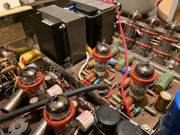
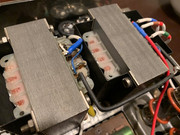
This will reduce channel crosstalk dramatically. It will also be the same in both channels.
These changes are a good start.
If you want to go further, you should consider modifying the James tone controls to have an even output (it is not flat at 0 position in a default configuration).
Also, it is a good idea to add additional 100uF capacitors for the anode voltage at the speaker transformers.
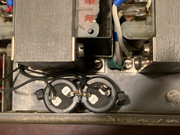
On my amp, I also replaced the speaker transformers with Welter Audio custom made dedicated transformers, which is a very significant upgrade, that will put this Braun amp on par with Leben CS300 and Audio Note OTO Phono.
As far as the loudness circuit goes, I removed it in my amp, because it adds significant phase shift and distortion at low frequencies.
